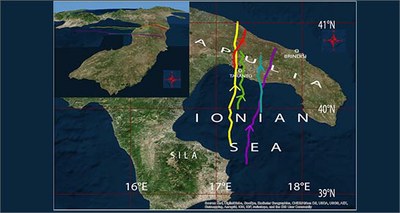Climate: Violent tornadoes on the rise in the Mediterranean due to global warming
7/6/2018
 The occurrence of intense marine waterspouts and tornadoes in Italian seas is increasingly likely due to the rise in the surface temperature of the water caused by global warming. This is what emerges from a ENEA - CNR study published in Nature's Scientific Report, one of the oldest and most authoritative scientific journals in the world.
The occurrence of intense marine waterspouts and tornadoes in Italian seas is increasingly likely due to the rise in the surface temperature of the water caused by global warming. This is what emerges from a ENEA - CNR study published in Nature's Scientific Report, one of the oldest and most authoritative scientific journals in the world.
The study was conducted on a tornado that struck Taranto in November 2012, when the surface temperature of the Ionian Sea was 1 C ° higher than the average for the period.
"Violent tornadoes are generated by thunderstorm cells, called supercells, which form only under certain meteorological conditions.
Through a modeling experiment we have demonstrated that the 1 C° of temperature variation was decisive in forming the supercell, therefore the tornado, ENEA researcher Vincenzo Motola, one of the authors of the study, explained. “In fact if the temperature of the sea increases, so does its energy, which is 'released' to the supercell. However, the proportionality between the heat of the sea and the intensity of the tornado is not linear. This means that, after a certain temperature, the violence of these phenomena increases in a more than proportional way”.
In this study the numerical data collected by the CNR were elaborated by ENEA with the ESRI-Arc-GIS software, which produced a map capable of geographically visualizing the phenomenon and highlighting the role of orography in the development of the tornado. In the case of the tornado off Taranto, the Sila, the mountain chain that crosses Calabria, has helped to create the wind conditions for the formation of the violent phenomenon.
In addition to providing important scientific results, this study has also shown that by combining the predictive modeling skills of the CNR, the GIS (Geographical Information System) skills of ENEA for the creation of the maps, interesting perspectives open up in the validation of models for the weather forecast and for the study of complex systems that determine the formation of extreme meteorological phenomena.
For more information see: The complete study published on the Scientific Report
